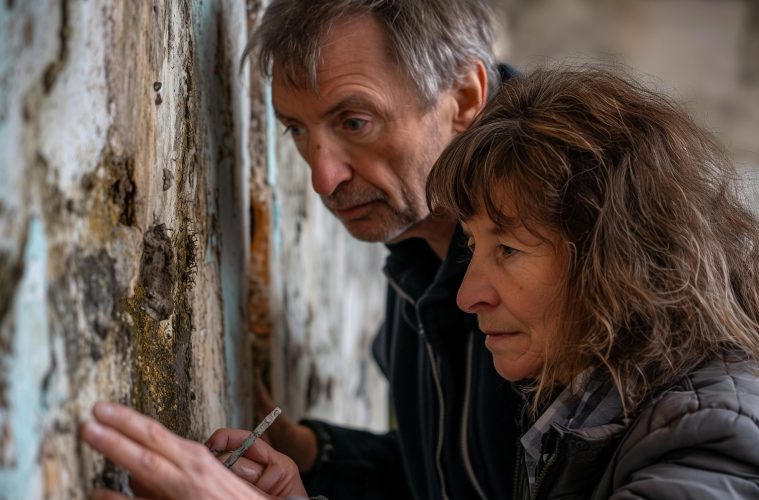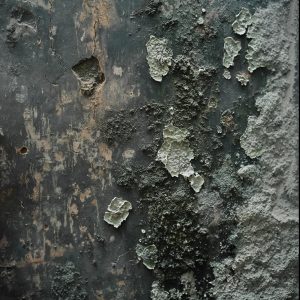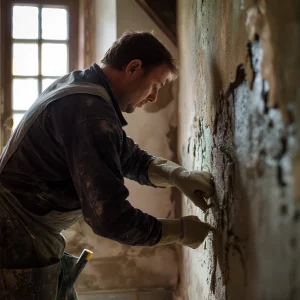Understanding and Combatting Damp in Your Home
Damp in the home is a pervasive issue that affects countless properties across the United Kingdom, posing significant risks not only to the structural integrity of buildings but also to the health of their inhabitants. The problem, often called the “Silent Invader,” requires immediate attention and a comprehensive understanding to effectively combat.
This article aims to equip homeowners, particularly in Brighton and other parts of the UK, with the knowledge and tools necessary to identify, prevent, and address damp in their homes.
Damp Identification and Types
The first crucial step in addressing the issue of damp is proper identification. Damp can manifest in several forms, each with unique causes and solutions. The three primary types of damp are condensation, penetrating damp, and rising damp. Identifying the correct type is essential for effective treatment.
- Condensation is the most common form of damp and occurs when excess moisture in the air condenses on cold surfaces, leading to water droplets that can soak into walls and furniture. It is often seen in kitchens and bathrooms, where humidity levels are higher. Further reading on dealing with condensation can be found at DIY.com.
- Penetrating damp is caused by water leaking through walls. This can occur at any level of a building and is often the result of structural problems, such as faulty roofing or guttering allowing water to enter the building. Strategies to combat penetrating damp are detailed at Reader’s Digest UK.
- Rising damp is the result of groundwater moving up through walls by capillary action. It typically affects the lower sections of walls and is more common in older buildings that may not have effective damp-proof courses. Treatment for rising damp can be explored further at Checkatrade.
Tools such as moisture meters and visual inspections are indispensable for accurately diagnosing the type of damp affecting a property.
Causes and Prevalence
The prevalence of damp in UK homes is a testament to the nation’s climate and the vulnerabilities inherent in its building fabrics. An estimated 4% of homes across the country are affected by damp, with the moist climate playing a significant role.
The health risks associated with damp, particularly from mould growth, cannot be overstated, as they can lead to respiratory issues and exacerbate conditions such as asthma and allergies. The Energy Saving Trust offers insight into dealing with damp in the home.
Preventive Measures
Preventing damp is invariably more cost-effective and less disruptive than treating it after it has occurred. Homeowners are advised to focus on moisture control as a cornerstone of damp prevention. This includes ensuring adequate ventilation to remove moist air from the home, installing insulation to keep internal surfaces warm, and using vapour barriers to prevent moisture from penetrating walls.
Simple lifestyle changes, such as drying clothes outdoors when possible, using lids on pans while cooking to reduce steam, and avoiding the use of unvented tumble dryers indoors, can also make a significant difference in controlling indoor humidity levels.
Damp-proofing Solutions
For homes already affected by damp, or those at high risk, implementing damp-proofing solutions is key. In older homes, the installation of a damp-proof course (DPC) can prevent rising damp, while the application of chemical waterproofers and the installation of physical barriers and waterproofing membranes can address penetrating damp. These solutions serve both to treat existing damp problems and to prevent future occurrences. A guide on DIY damp-proofing can be found at thebigidea.
Ventilation and Humidity Control
Effective “house breathing” is crucial for maintaining a healthy indoor environment. This involves the use of humidity-sensitive extractor fans, particularly in high-moisture areas like kitchens and bathrooms, and the strategic use of dehumidifiers to control indoor humidity levels. Ensuring that homes are well-sealed against external moisture while still allowing for adequate air exchange is a delicate balance that must be struck to prevent damp.
DIY and Professional Solutions
When it comes to addressing damp, there are measures that homeowners can undertake themselves, as well as situations that necessitate professional intervention. It’s crucial to recognise when a simple DIY approach is adequate and when it’s time to call in the experts.
- DIY Solutions: For minor damp issues, such as those caused by condensation, homeowners can often take remedial action themselves. This might include applying sealants to prevent water ingress, improving airflow within the home by rearranging furniture to allow for better circulation, and using moisture traps or dehumidifiers to reduce humidity levels. Simple lifestyle adjustments, such as ensuring regular ventilation and avoiding activities that produce excessive moisture, can also be highly effective.
- Professional Solutions: More severe cases of damp, particularly those involving rising or penetrating damp, will likely require the expertise of professionals. This is because these types of damp often stem from structural issues or failures in the building’s damp-proofing measures, which are not easily addressed without specialist knowledge. Professionals can diagnose the exact cause of the problem, recommend the most effective treatment, and ensure that any work carried out complies with building regulations and standards. Utilising skilled tradespeople is essential not only for resolving the current issue but also for preventing future occurrences.
“When confronting severe damp issues, professional intervention is not just a recommendation; it’s a necessity. Our expertise allows us to accurately diagnose the root cause—be it rising damp, condensation, or penetrating damp—and tailor a solution that not only addresses the immediate problem but also safeguards the property against future occurrences. Utilizing advanced techniques and materials, we ensure that any intervention complies with the highest industry standards, offering homeowners peace of mind and long-term protection. Remember, the cost of expert damp proofing is an investment in the health of your home and its inhabitants.” – Phil Donno – Brighton Damp Treatments.
Installation and Maintenance
The quality of any installation, whether carried out as a DIY project or by professionals, is paramount in ensuring the long-term effectiveness of damp-proofing measures. However, even the best installations can fail over time if not properly maintained.
Regular maintenance checks are vital for early detection of potential problems, such as leaks, which can lead to damp if not promptly addressed. Homeowners should routinely inspect their properties, paying close attention to gutters, downpipes, and the building’s exterior for signs of damage or blockages that could contribute to water ingress.
Health and Home Impact
The impact of damp on both the health and the structural integrity of buildings cannot be overstated. The presence of damp and mould in a home has been linked to a range of health issues, including respiratory problems, allergies, and weakened immune systems. For individuals with pre-existing health conditions, such as asthma, the presence of mould can exacerbate symptoms, making it even more critical to address damp issues promptly.
From a structural perspective, damp can cause significant damage to a building. Over time, moisture can weaken timber, cause plaster and paint to deteriorate, and lead to the corrosion of metal fittings. If left unchecked, the costs associated with repairing this damage can be substantial, highlighting the importance of prevention and early intervention.
Tenant and Landlord Responsibilities
In rental properties, the responsibilities regarding damp and mould are often a source of confusion. Generally, landlords are responsible for ensuring that their properties are free from damp and mold by maintaining the building’s structure and resolving any issues that may contribute to damp.
Tenants, on the other hand, have a responsibility to adequately ventilate and heat the property to prevent condensation. Should disputes arise, local authorities can intervene to assess the situation and enforce necessary actions.
Recommendations for Severe Cases
In instances where severe damp issues are identified, particularly with rising damp affecting floors, more extensive measures may be required. This can include the application of a damp-proof membrane or, in extreme cases, the replacement of the affected floor. Such scenarios underscore the importance of seeking expert consultation to ensure that the diagnosis is accurate and the treatment plan is appropriate for the severity of the issue.
Final Thoughts
In conclusion, effectively combatting damp within our homes requires a comprehensive approach that encompasses both preventive measures and targeted interventions. By understanding the nuances of DIY versus professional solutions, the importance of regular maintenance, and the potential health and structural impacts of damp, homeowners can take decisive action to protect their properties and their well-being.
As we continue to explore this topic, the focus will shift towards long-term management strategies and innovative solutions that can further aid in the fight against damp, ensuring that our homes remain safe, healthy, and free from the silent invader.







